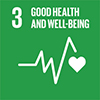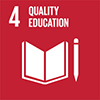Reinforced by centuries of expertise, RCSI has been at the forefront of international health education since our establishment in 1784.
The university's history of innovation in teaching is woven into our pioneering approach to education in the modern era. We introduce our students to this rich heritage and culture of excellence, giving them an excitingly diverse and academically rigorous experience.
One past figure that exemplifies this is Abraham Colles, a former president of RCSI.
Colles revolutionised the teaching of anatomy, a subject traditionally taught one isolated system of the body at a time. Introducing the concept of teaching anatomy through the regions of the body, Colles' approach led surgeons to take a more holistic view of their patient. This approach influences the teaching of medicine to this day.
A professor of anatomy, Colles was responsible for the identification of the Colles fracture nearly a century before x-rays were invented. With skills and expertise ahead of his time, the professor's innovative and practical approach to research and teaching is firmly embedded within his department and across the institution.
Today, RCSI's Department of Anatomy has become the Department of Anatomy and Regenerative Medicine, an amalgamation of an academic department steeped in history with a research department driving cutting-edge discoveries in regenerative medicine. The tradition of innovative anatomical education underpinning the department's ethos is now a doorway to new horizons in clinical discovery and patient-focused healthcare.
This short film showcases the Department's early historical teaching innovations, illustrating the progression to future-focused regenerative medicine research with the potential to repair human tissue damaged by injury or disease.
RCSI is committed to achieving a better and more sustainable future through the UN Sustainable Development Goals.


